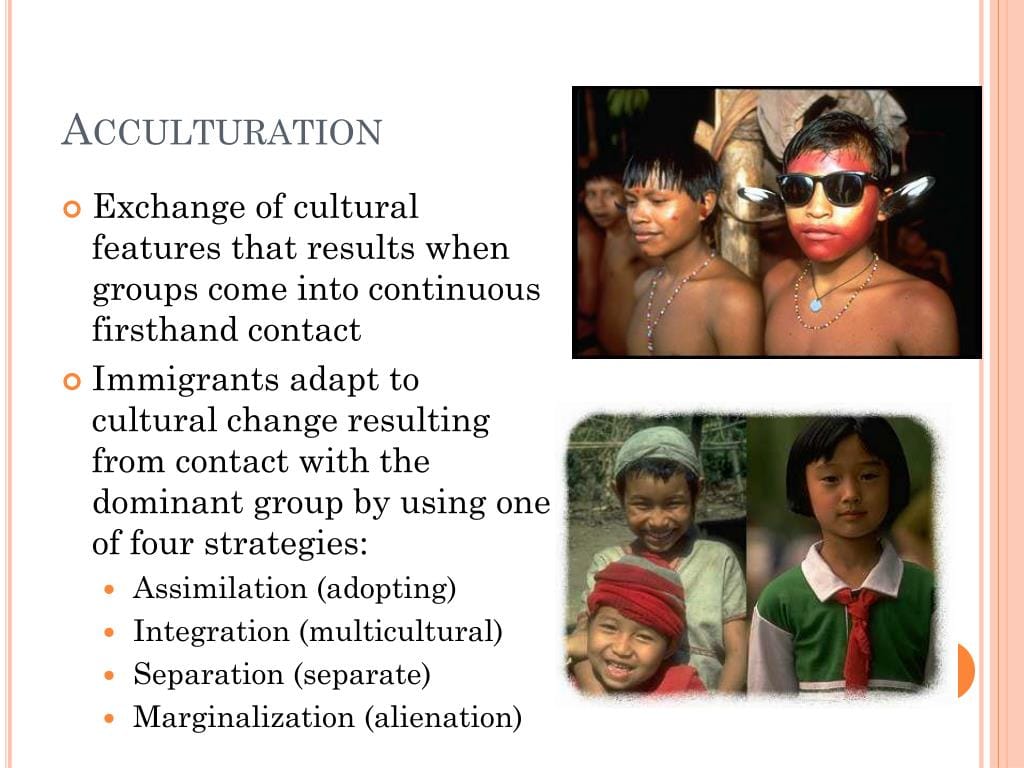Understanding Acculturation in AP Human Geography
Acculturation is a cornerstone concept in AP Human Geography. It describes the fascinating process of cultural modification resulting from sustained contact between different cultures. Think of it as a two-way street of cultural exchange where groups interact and adapt, borrowing traits from one another while still retaining aspects of their original cultures. This dynamic interplay differs significantly from assimilation, where one culture absorbs another, often resulting in the loss of the original culture. For a deeper dive into the Comancheria, a region shaped by its unique cultural interactions, explore our dedicated guide.
Factors Influencing Acculturation
Several factors influence how cultures blend and adapt during acculturation. These factors act like ingredients in a recipe, shaping the final outcome of cultural exchange.
Contact Duration: The length of time cultures interact is crucial. Longer contact periods likely lead to more significant cultural exchange. Imagine immigrants living in a new country for generations; they probably experience a deeper level of acculturation compared to recent arrivals.
Interaction Intensity: Frequent and meaningful interactions between cultural groups accelerate acculturation. Daily interactions in diverse workplaces or schools, for example, can lead to a faster exchange of cultural traits than occasional encounters.
Power Dynamics: The balance of power between cultures plays a significant role. Dominant cultures often exert greater influence, leading to a more substantial adoption of their traits by less dominant groups. The global spread of American fast food chains, influencing local diets, exemplifies this dynamic. However, even dominant cultures can adopt elements from less dominant ones, highlighting the two-way nature of acculturation.
Willingness to Adapt: A culture’s openness to new ideas and customs is paramount. Some cultures are more receptive to change, while others hold firmly to traditions. This openness often determines the extent to which a culture adopts new practices. Immigrants learning the language of their new home demonstrate this willingness to adapt, easing their integration into the new society.
How Acculturation Manifests
Acculturation reveals itself in various tangible ways, shaping everyday life and cultural expressions.
Language: Individuals might incorporate new words and phrases from another culture into their language. Sometimes, entirely new blended languages emerge, reflecting the fusion of different linguistic traditions.
Customs and Traditions: This can encompass adopting holidays, celebrations, and daily routines from another culture. Communities might start celebrating festivals from different cultural backgrounds or incorporate new rituals into their own traditions.
Food: Culinary practices offer a prime example of acculturation. People may experiment with new ingredients, cooking techniques, and dishes, leading to the creation of fusion cuisines that blend flavors from diverse cultural backgrounds.
Religion: Religious beliefs and practices can also undergo a process of blending. This can result in the emergence of syncretic religions, where elements from different faiths combine to create new religious traditions.
Acculturation Examples: A Deeper Dive
Let’s illustrate acculturation with a tangible example: the evolution of English in India following British colonization. The British introduced English, which became prevalent in administration, commerce, and law. However, instead of replacing India’s diverse languages like Hindi, Bengali, and Tamil, English became interwoven into the linguistic landscape. This resulted in a fascinating blend where individuals might use English in professional settings and their mother tongue at home, showcasing the adaptability and resilience of language in the face of cultural change.
The global spread of American fast-food chains provides another compelling example. These restaurants have adapted their menus to local tastes, demonstrating cultural sensitivity and a willingness to embrace local preferences. A McDonald’s in Japan serving a teriyaki burger or a KFC in Thailand offering rice alongside fried chicken exemplifies this adaptation, reflecting a deeper cultural exchange. For further exploration of geographical and cultural shifts, consider researching the central Pangean mountains and their impact on surrounding environments.
Acculturation isn’t limited to language and cuisine. It can also reshape religious practices, clothing styles, artistic expressions, and even family structures. A family migrating to a new country might adopt certain customs while retaining cherished traditions, leading to the creation of unique cultural expressions that enrich the global tapestry.
Acculturation vs. Assimilation: Clarifying the Distinction
While both involve cultural adaptation, acculturation and assimilation are distinct processes. Acculturation is akin to moving to a new town and gradually incorporating new aspects of local life while maintaining core elements of your previous lifestyle. You might try new restaurants or join local groups while still cherishing connections with your old friends and habits.
Assimilation, conversely, resembles moving to a new town and feeling pressured to completely transform everything about yourself to fit in. This can involve abandoning original cultural practices and fully embracing the new culture’s expectations, sometimes leading to a sense of cultural loss or disconnect from one’s roots.
Key Distinctions:
- Degree of Change: Acculturation entails adopting some aspects of a new culture, while assimilation involves a more comprehensive transformation.
- Retention of Identity: Acculturation allows retaining core cultural elements, while assimilation often requires relinquishing them.
- Power Dynamics: Acculturation frequently occurs in situations of relative equality, whereas assimilation can be driven by imbalances of power, with dominant cultures exerting pressure on minority groups.
Assimilation in AP Human Geography
Assimilation signifies a substantial shift in cultural identity, where individuals adopt a new culture so thoroughly that they largely abandon their original one. This can happen gradually over time or more rapidly due to external pressures. Factors influencing assimilation include the length of time spent in the new culture, the intensity of interaction with its members, and the prevailing power dynamics. Assimilation can lead to both opportunities, such as improved economic prospects, and challenges, including the loss of cultural heritage and potential experiences of discrimination.
Acculturation and AP Human Geography: Connecting the Dots
Acculturation is pivotal in AP Human Geography as it helps us understand:
Cultural Landscapes: Acculturation shapes both physical and cultural environments, leading to the development of unique landscapes that reflect the blending of different cultural influences.
Ethnic Enclaves: These are neighborhoods within cities where specific cultural groups concentrate and maintain their traditions while adapting to the broader cultural context.
Cultural Diffusion: Acculturation serves as a primary mechanism for the spread of cultural ideas, innovations, and customs across geographical boundaries.
Globalization: In our interconnected world, globalization accelerates acculturation, as increased interactions between cultures lead to a more rapid exchange of cultural traits.
Understanding acculturation empowers you to analyze cultural dynamics, ethnic diversity, and the evolving nature of societies, providing a robust foundation for the AP Human Geography exam.
| Feature | Original Culture | Influencing Culture | Outcome of Acculturation |
|---|---|---|---|
| Language | Native languages (e.g., Hindi, Bengali, Tamil) | English | Bilingualism/Multilingualism, code-switching |
| Cuisine | Traditional Indian dishes | Western Fast Food | Fusion cuisine (e.g., Indian-spiced burgers) |
| Clothing | Traditional Indian attire | Western-style clothing | Blend of traditional and Western clothing styles |
| Religious Practice | Traditional Indian religions | Christianity, Islam | Syncretism, adaptation of existing religious practices |
This table illustrates acculturation’s multifaceted nature, showcasing how different cultural elements can blend and adapt. Ongoing research continues to deepen our understanding of this complex process, reminding us that cultures are dynamic and constantly evolving.
- Master Wordle: words with i and c in positions 1-3 Solved in Minutes - March 15, 2025
- Name Giving Guide: Global Trends & Insights - March 15, 2025
- Modern Forms for Higher Conversions: A Complete Guide - March 15, 2025
















